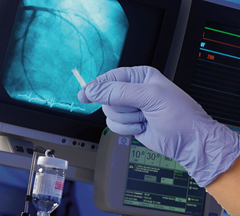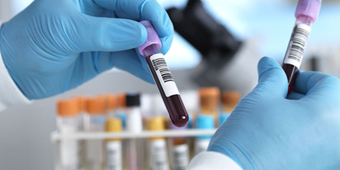The Stent: A Tiny Life-Sustaining Marvel
Answer a few questions and we'll provide you with a list of primary care providers that best fit your needs.
It may be a simple device – a small, flexible mesh tube or coil – but when you have a coronary artery that’s weak or narrowed by plaque and restricting blood flow to your heart, a stent can keep you alive. And that’s no simple matter.
A stent acts like scaffolding, supporting the walls of an artery to keep the blood vessel open and blood flowing to the heart.
Stents can be made of metal or fabric. Fabric stents, sometimes referred to as stent grafts, are used in larger arteries.
Special stents – called drug-eluting stents – have a medicine coating that gradually releases into the artery to help prevent a repeat blockage.
When fatty deposits, called plaque, build up and narrow a coronary artery, blood flow to the heart is reduced. This can cause chest pain. And a heart attack can result if a clot forms in the artery, completely blocking blood flow.
By keeping a coronary artery open, a stent reduces your risk of a heart attack.
How Stents are Placed
Stents are placed in arteries through percutaneous coronary intervention (PCI), a procedure that’s also known as coronary angioplasty. PCI restores blood flow through narrow or blocked arteries. Not all coronary angioplasty procedures involve the insertion of a stent. But most do.

Here’s how a stent is placed in a narrowed or blocked artery through angioplasty:
- Your doctor makes a small opening in a blood vessel in your groin, arm, or neck.
- Guided by X-ray video images, your doctor threads a thin, flexible tube – a catheter – through the blood vessel, to your narrowed or blocked artery.
- At the end of the catheter, a deflated balloon carries the stent.
- Once the catheter reaches the narrowing or blockage, the balloon inflates. The inflating balloon expands the stent to support the wall of the artery, opening the artery and restoring blood flow.
- The balloon is deflated and removed with the catheter, leaving the stent in place.
Stents help prevent arteries from narrowing again or becoming blocked. In some cases, angioplasty is performed without placing a stent. In more than a third of these cases, the treated artery begins to narrow within months of the procedure, according to the American Heart Association.
If a stent doesn’t work to keep the artery open, your doctor may recommend coronary artery bypass surgery (CABG).
A stent acts like scaffolding, supporting the walls of an artery to keep the blood vessel open and blood flowing to the heart.
Other Ways Stents Are Used
Besides supporting narrowed coronary arteries, stents are used for:
- Weakened coronary arteries. This increases blood flow and helps prevent arteries from bursting.
- Carotid arteries in the neck. This is done when plaque builds up, reducing blood flow to the brain and increasing risk of stroke.
- Other arteries narrowed by plaque. This includes arteries in the kidneys and limbs. Narrowed kidney arteries can decrease kidney function and increase blood pressure. Reduced circulation caused by narrowed arteries in the limbs – peripheral artery disease (PAD) – can cause leg or arm pain and could eventually require surgery if not treated.
- The aorta. This helps prevent an aneurysm, a weakened and bulging area, from bursting. The aorta is a major artery that runs through the chest and abdomen carrying blood from the heart. Pleated fabric stents are used in this case. The stent creates a new inner lining for the area of the aneurysm, and cells in the artery grow over the fabric.
Stents may also be used for tears in the inner wall of the aorta – to help prevent a blockage of blood flow or a burst.
Answer a few questions and we'll provide you with a list of primary care providers that best fit your needs.
Source: National Heart, Lung and Blood Institute; American Heart Association




